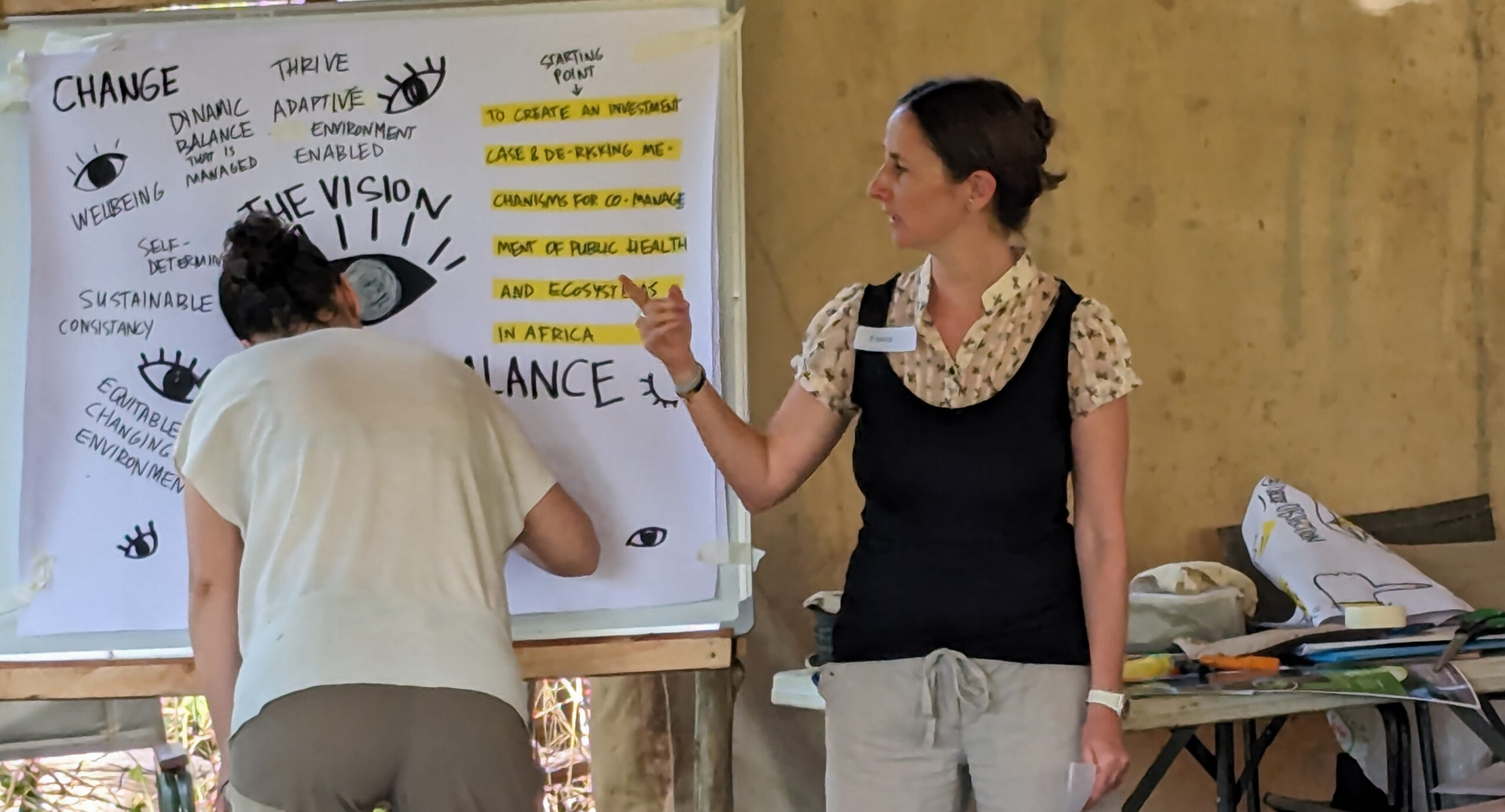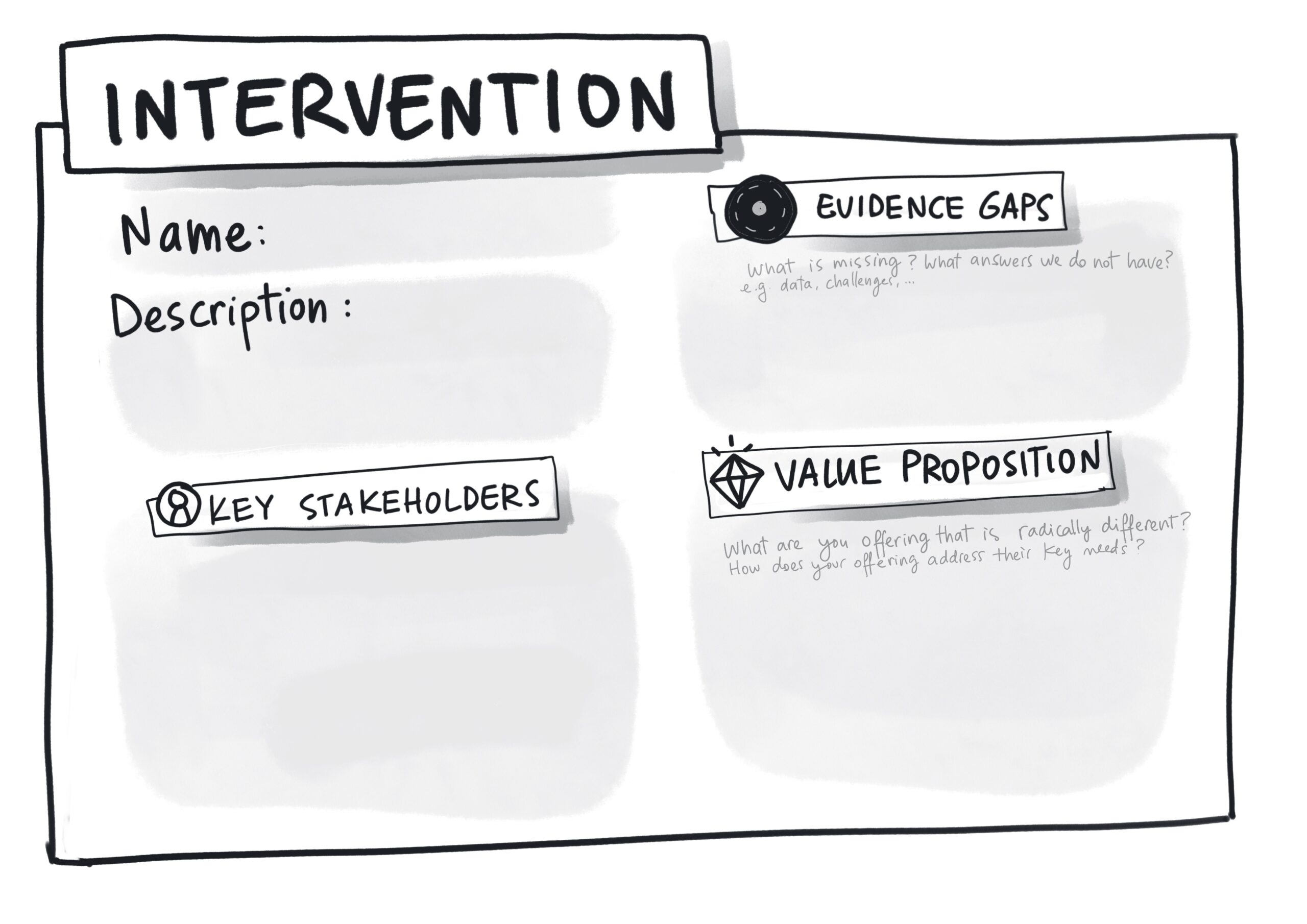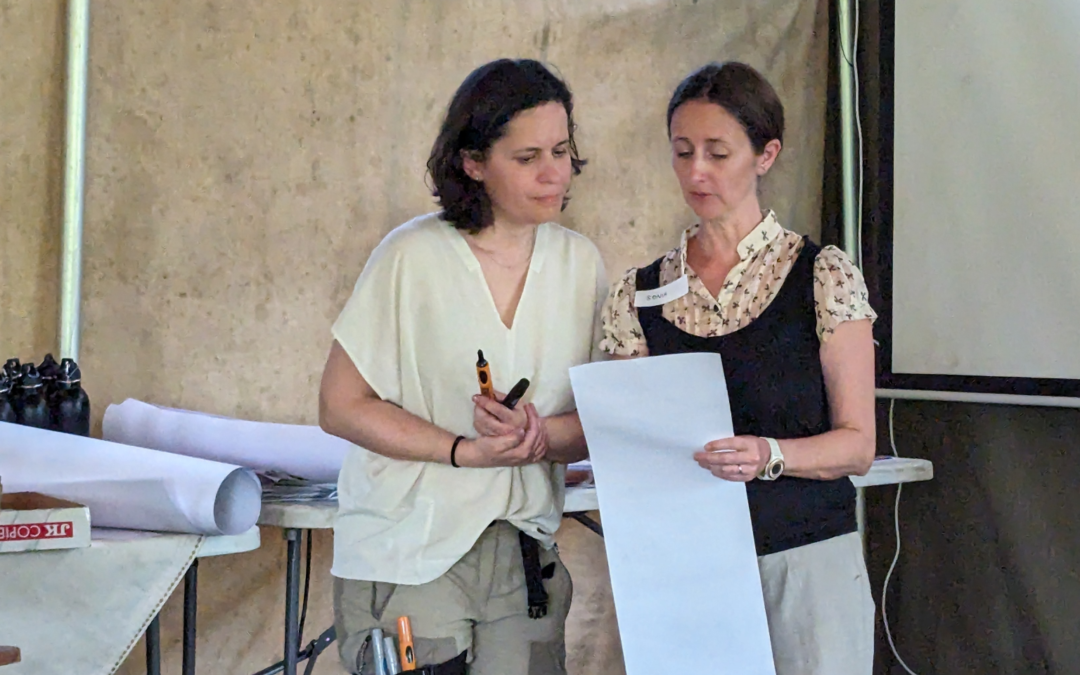How can visuals boost collaboration in participatory processes? How can you magnify the impact of a graphic facilitator in the room? How can facilitators and visual harvesters make each other shine and collaborate to their full potential?
In this blog post, we delve into the power of visual facilitation and collaboration between facilitators and graphic facilitators. We want to share SenseTribe hosting team learnings and insights that emerged while hosting the amazing Ecosystems, Finance & Health Inception Workshop, in Sarara, Northern Kenya.
Having all the team being trained in the Art of Hosting gave us a very solid common ground to be able to collaborate. But we sensed a lack of clear explicit information about best practices for collaboration between process facilitators and visual harvesters in each stage of a workshop. Here is our team contribution to bring some ideas that emerged from our experience:
Before the workshop: preparation and design stage
“Sometimes we forget how facilitating and harvesting are the two sides of a coin, the importance of having someone listening when we talk.“
We all know that preparation is key to hosting great events. Based on the Pareto Principle we can say that for a great event 80% of the work is done during the planning. Having a visual facilitator being part of the early design stages of the process can dramatically turn what direction the overall process.
If you ever worked with a visual facilitator, you know that we start from the end. Our aim is to clarify the final outcome and from there figure out all the steps to get it. At this initial stage, visuals can really support the team to communicate effectively and be truly aligned and bring attention to the calling.
Some ideas on how a graphic facilitator can contribute before the workshop:
- Live drawing sensemaking session to clarify and align what does the client want to get out of the process/workshop
- Design a template to harvest all the key information to kick off: what is the purpose, what is needed, what are the desired outcomes …
- Create pre-engagement studio illustrations of what is identified that can support during the workshop such as visual Invitations, Main topics icons, Visual Agenda, pre-engagement social media visuals, and gifs.
Space set up and layout: contribute to making the gathering practical, full of interesting information and aesthetical.

During the Workshop
Visuals for openings and wrap ups
Visual panels can be a thread that help us to look back on and relate to key ideas. Facilitators can show the visuals, and use them for closings to wrap up or openings to catch up from the day before. It even can help a facilitator when they are a little lost or confused.

Graphic recording
Translating the words and ideas shared into visuals and notes is a powerful practice. It can be a panel discussion, a keynote, or just shared reflections… possibilities are endless. Visual panels have the power to let the most essential information be captured and therefore make it memorable and easy to share.
Synchronise our rhythms, slow down, and let words shared be truly heard and captured
When we take live visual notes, we need to slow down, yes! Slow down, and this is often a good thing. We find it very useful that participants come and share what info they really want there to be recorded. We all become truly present and capture the essence of what is resonating when so many ideas are flying.


Include Visual Harvester in the Circle
The way the event gathering is set up has a direct impact on what will happen in that room. Often visual facilitators are placed at the back of spaces and they do not hear very well or get much attention on what they are producing until the end of the session. When this happens we miss the opportunity for participants to have visual support of what is happening in real time. In our experience, we found that the visual harvester was included in the circle, participants were more engaged and focused , the visual harvester could hear the conversations better, and people showed more interest in seeing visuals after.
Templates to Support Facilitation
A Template acts as a container to help teams to focus and know what they need to get out of a certain amount of time together. It really can change the way we spend our time during a working session and make it more effective.
Templates are tailored to each activity but there are also popular frameworks that can be really helpful.


The power of co-creating a common ground
Having participants to co-create a vision statement, manifesto, strategic plan together with the support of visuals can really support the sense of clarity, alignment and commitment, a vision statement, designed around the future that members of the Namunyak community who participated in the workshop would like to see in 2050, was termed the “Namunyak.

Visual sensemaking
A graphic facilitator can also be at service by drawing teams new ideas, theories, models, visions. This helps participants to make a big step forward in making sense of complexity
share their knowledge in a very powerful way.
Example of how a group co-design their own model to explain how evapotransportation works and how it relates to land use, humans, animals, and plants and climate change.
Empower participants to draw and bring ideas on paper
Having a graphic facilitator in the room can make drawing and visual note taking intimidating for some. But none of this is about pretty visuals, this is all about improving communication and letting innovative ideas emerge.
Encouraging and supporting participants to visually represent their own thinking is one of the roles that facilitators and visual facilitators can have in the room.
Participant supported by visual facilitator creating his own model to evaluate the different proposed interventions based on different variables.
Visuals for closings and open space for reflection
Sometimes empty space and not doing time can be the most nourishing setting for creativity and innovative ideas to emerge. Inviting participants to share a cup of coffee and review the visuals produced during the meeting can open up space for reflection and new ideas to emerge.
After the workshop:
All the visual materials produced during the workshop are great to be shared beyond the gathering, they can be share in many different ways:
- Visual reports
- Social media images / gifs
- Video animations
- And more…
This way the impact of the information and the likeliness that people will pay attention to it will increase dramatically.
We hope all this learnings and ideas were useful for you
Please share your comments with us! We also would love to learn your best practices.

